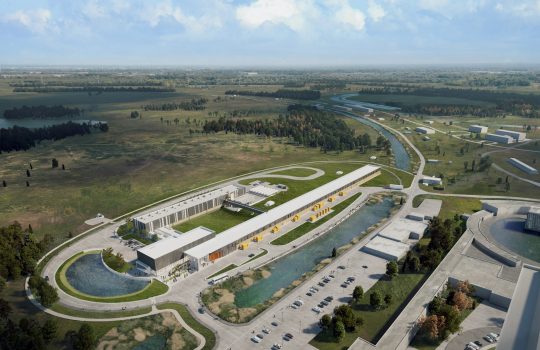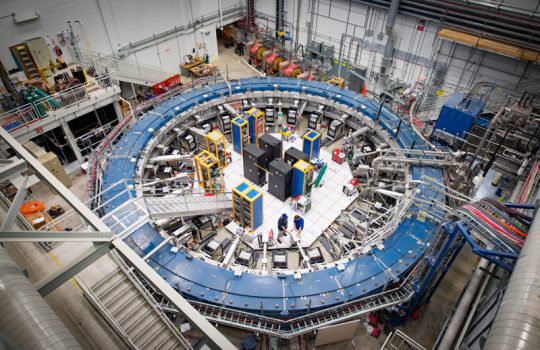It would be the world’s most ambitious neutrino experiment. And Fermilab wants everybody to know about it, especially its neighbors. Construction of the project would take place on the western portion of the laboratory site, close to Kirk and Giese roads in Batavia, and could begin as early as 2015.
The Department of Energy and Fermi National Accelerator Laboratory are inviting the local community to an informational meeting about the proposed Long-Baseline Neutrino Experiment. The meeting, which will feature illustrative posters and short presentations, will take place on
Thursday, May 23, 2013
6:30-8:30 p.m.
Fermilab, Wilson Hall atrium
Batavia, Illinois
The meeting will provide neighbors and the local community with an opportunity to mingle with scientists and engineers and ask questions about the LBNE, the construction and the environmental assessment that will be prepared pursuant to the National Environmental Policy Act.
More than 350 scientists from five countries are working on the proposed experiment. LBNE managers expect the draft environmental assessment to be released in early 2014 . Fermilab and the Department of Energy will then hold another public meeting to give people the opportunity to comment on the draft findings of the environmental assessment.
The proposed Long-Baseline Neutrino Experiment would send a beam of neutrinos straight through the earth from Fermilab to the Sanford Lab in Lead, South Dakota. It would allow scientists to learn more about neutrinos, their interactions with matter and the role that these particles play in nature.
The LBNE team proposes the construction of four buildings on the Fermilab site, one of which would be about 40 feet high, 160 feet long and located near Kirk Road and Giese Road. That building would be connected via a vertical shaft to an underground hall about 200 feet below the Fermilab site. The work also would include the construction of a 52-foot-high hill about 1,000 feet from Kirk Road on the Fermilab site, as part of the facility that would create the neutrinos.
Neutrinos, which are also produced both by our sun and in the interior of the earth, are among the most abundant particles in the universe. Fermilab has been operating neutrino-producing facilities for more than 30 years. In the early 2000s, Fermilab constructed a facility that sends a beam of neutrinos from Fermilab straight through the earth to a particle detector in Minnesota. The experiments that use that facility have made important measurements of neutrino properties and how neutrinos interact with other building blocks of matter. The new facility would greatly add to the results from that research.
More information about LBNE and the plan for the environmental assessment are on the Web at http://lbne.fnal.gov/env-assessment.shtml. For more information on the public meeting or regarding special accommodations, please contact Katie Yurkewicz, Fermilab communication director, at 630-840-3351.
Fermilab is America’s premier national laboratory for particle physics research. A U.S. Department of Energy Office of Science laboratory, Fermilab is located near Chicago, Illinois, and operated under contract by the Fermi Research Alliance, LLC. Visit Fermilab’s website at www.fnal.gov and follow us on Twitter at @FermilabToday.
The DOE Office of Science is the single largest supporter of basic research in the physical sciences in the United States, and is working to address some of the most pressing challenges of our time. For more information, please visit science.energy.gov.



